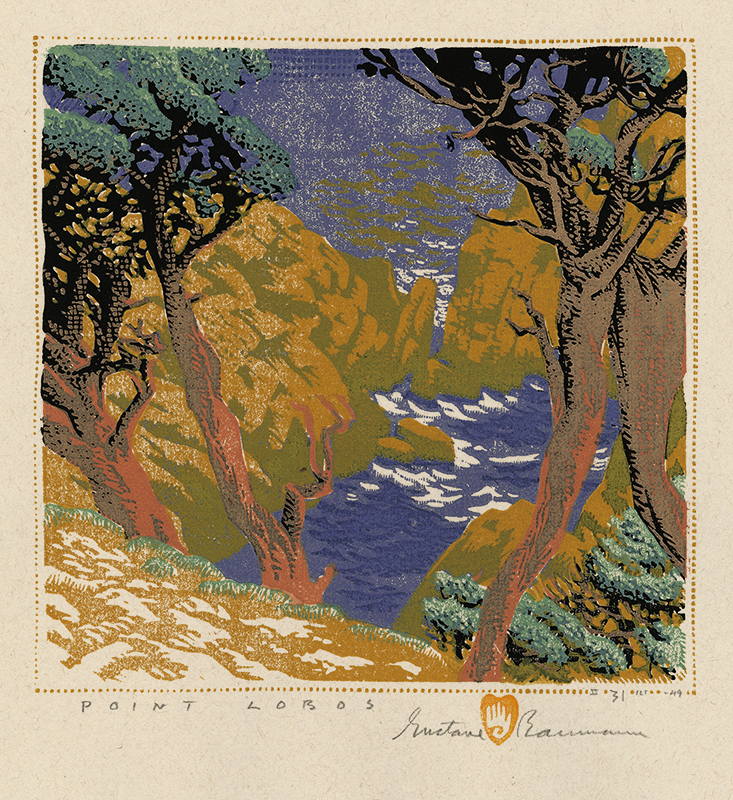Point Lobos is a color woodcut by American master printmaker Gustave Baumann that originated in 1936. This impression was printed by the artist in 1949 from recut blocks and is pencil signed, titled, and editioned II 31-125 '49. Point Lobos was printed by the artist from recut blocks on cream wove Ansbach paper. There is a total of 82 impressions from the two printing campaigns. The reference for Point Lobos is Chamberlain 148 and the image measures 8-1/8 x 8-1/8 inches.
Beginning in April 1927, Baumann made numerous auto trips from Santa Fe to California, via the Arizona desert. In his search for subject matter, he drove up the California coastline and had favorite places to lodge or camp. We are fortunate that Baumann wrote or telegraphed messages his wife, Jane. These original manuscripts are part of the Gustave Baumann Archive at the Chavez Library of the New Mexico History Museum.
This spectacular ocean shoreline is probably the most recognizable spot on the California coast. Artists, including Baumann, have memorialized Point Lobos in photographs, oils, watercolors, drawings, and prints. Today this location is known as the Point Lobos State Reserve and is considered the crown jewel in the California state park system.
Gustave Baumann was born in Magdeburg, Germany on 27 June 1881. Ten years later his family immigrated to the US, settling in Chicago. In 1896, Baumann began working in the commercial art field while saving money to study in Germany. After returning from Munich in December 1905 where he studied at the Kunstgewerbeschule, Baumann worked again in commercial art to support his family. In 1909, he discovered Brown County, Indiana where life was inexpensive and he could stay for three months. He produced a series of small format color woodcuts featuring the people and places of Brown County and then produced five large format color woodcuts. His woodcuts were accepted by the committee for the 1915 Panama Pacific International Exposition and he won a gold medal in 1916. Baumann headed east to Wyoming, New York in 1917 and taught at a summer school. From there he headed to Provincetown and New York City before returning to set up his studio in Wyoming. The southwest beckoned and he headed west in May 1918, stopping in Taos for the summer and fall. His funds were low and he needed to head back to Chicago but first stopped at the new art museum in Santa Fe to see an exhibition of his woodcuts. The rest, they say, is history.



